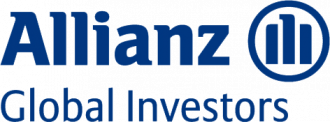The Covid-19 pandemic has reminded us of how giving consideration to a govern- ment’s performance on long-term issues related to environmental, social and gov- ernance (ESG) factors can help an inves- tor assess the relative resilience of an emerging market (EM) economy.
ESG framework overview
Our proprietary ESG framework assesses more than 90 investable EM countries. This is done via a selection of 20 indica- tors that capture key development issues aligned with the UN Sustainable Develop- ment Goals (SDGs). These indicators are sourced from reputable international in- stitutions and are regularly updated, albe- it with a low frequency. This scoring pro- cess is coupled with a qualitative “direction of travel” assessment. Correctly determin- ing an EM country’s direction of travel has shown to be key to avoiding tail risk events and capturing opportunities.
An overall ESG score is computed as a weighted average of the three pillars’ scores (20% weight – Environment; 30% weight – Social; 50% Governance). We believe that governance factors have the greatest potential impact on a country’s ability to meet strong environmental standards or achieve social outcomes. Our integrated ESG approach allows us to quantify factors that are often not cap- tured by standard macroeconomic analy- sis. We deploy this approach across all our EM strategies. For our Sustainable and Responsible Investing portfolios, we addi- tionally apply a minimum-threshold to
exclude the bottom performers in each ESG pillar.
Evolving the framework
To increase the focus of our framework on the pressing global climate emergency, we have included a new indicator within the environmental pilar that captures a sovereign’s warming potential, based on nationally determined contributions (NDCs). NDCs are non-binding national plans to tackle climate change, to achieve targets set by the Paris Agreement. Under the agreement, each party commits to prepare and maintain climate goals (the NDCs). These actions determine whether the world achieves a global peaking of greenhouse gas emissions. The agree- ment stipulates that emission reductions are undertaken on the basis of equity and in the context of countries’ efforts to pur- sue a sustainable development. With this in mind, we consider the difference in a sovereign’s warming potential under a “business as usual” approach and under its NDCs, to capture its aspirations and plans to reach the goal of containing glob- al warming to 1.5-degrees Celsius.
Recent framework scores
In the latest data refresh of the frame- work, we note the continuation of an en- couraging trend: the largest relative im- provements have been occurring in some of the least developed countries (LDCs), while declines in scores were relatively few, small and concentrated amongst the highest rated countries. Ghana, Mongolia and Barbados achieved the largest relative increase of their ESG score in the 90-country dataset.
On the NDC front, frontier markets, such as Barbados, Azerbaijan and Armenia,
fare very well. Interestingly, countries that have been at the centre of controversy and debate in recent years, particularly around deforestation concerns, such as Brazil, Angola and Indonesia, also appear to be setting their aims high. But not all EMs are making progress on this. On average, per capita emissions in developed mar- kets fell by 1.5-1.75 tons during 2010 and 2018, while they increased in EM. It should be noted that part of DMs’ emis- sion reduction has been offset by their higher imports from EM which have a more-intensive energy mix. All in all, this makes tracking EM progress on mitigat- ing climate change through decarboniza- tion more important.
Conclusions
As the Covid-19 and climate crises expose economies’ vulnerabilities, EM issuers will likely need to weather new challeng- es, while working towards attaining the SDGs. Successfully navigating EM debt will require an investment strategy that can identify issuers on improving or dete- riorating ESG-trajectories.
Consistently applying our ESG frame- work has supported alpha generation over time, by helping us avoid tail risk events, such as the default in Lebanon last year. It has also allowed us to identify ESG cham- pions whose improving credit quality has driven bond prices higher, for example in Ukraine.





